
Spring is typically when we think of mother hens hunkering down in nests to hatch baby chicks, but a hen can be influenced by maternal hormones any time of year. Despite several feet of snow having been dumped on parts of Connecticut this week, my ol’ girl, ellen deHeneres, isn’t waiting for spring, she’s broody now! Let’s look at various options for managing a broody hen, including facilitating chicken surrogacy, by grafting chicks to a broody hen!
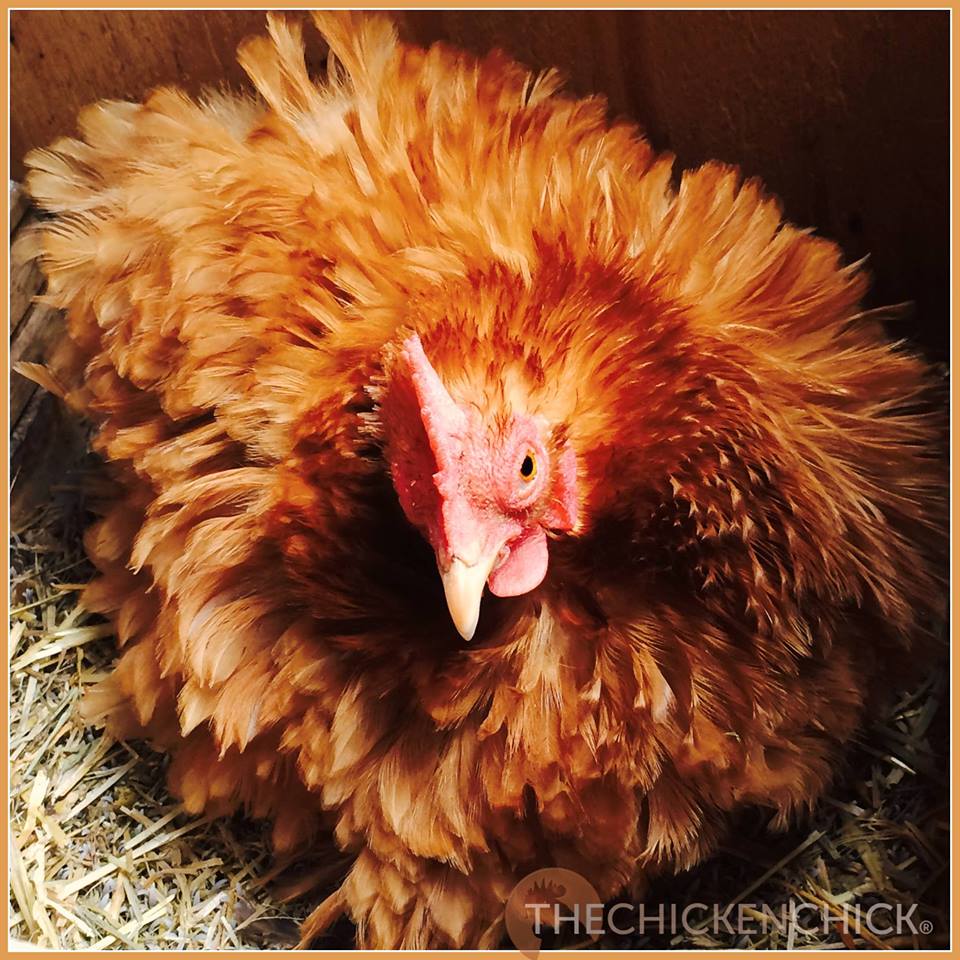
Rachel is the poster chick for broodiness. She never met a nest she didn’t want to occupy.
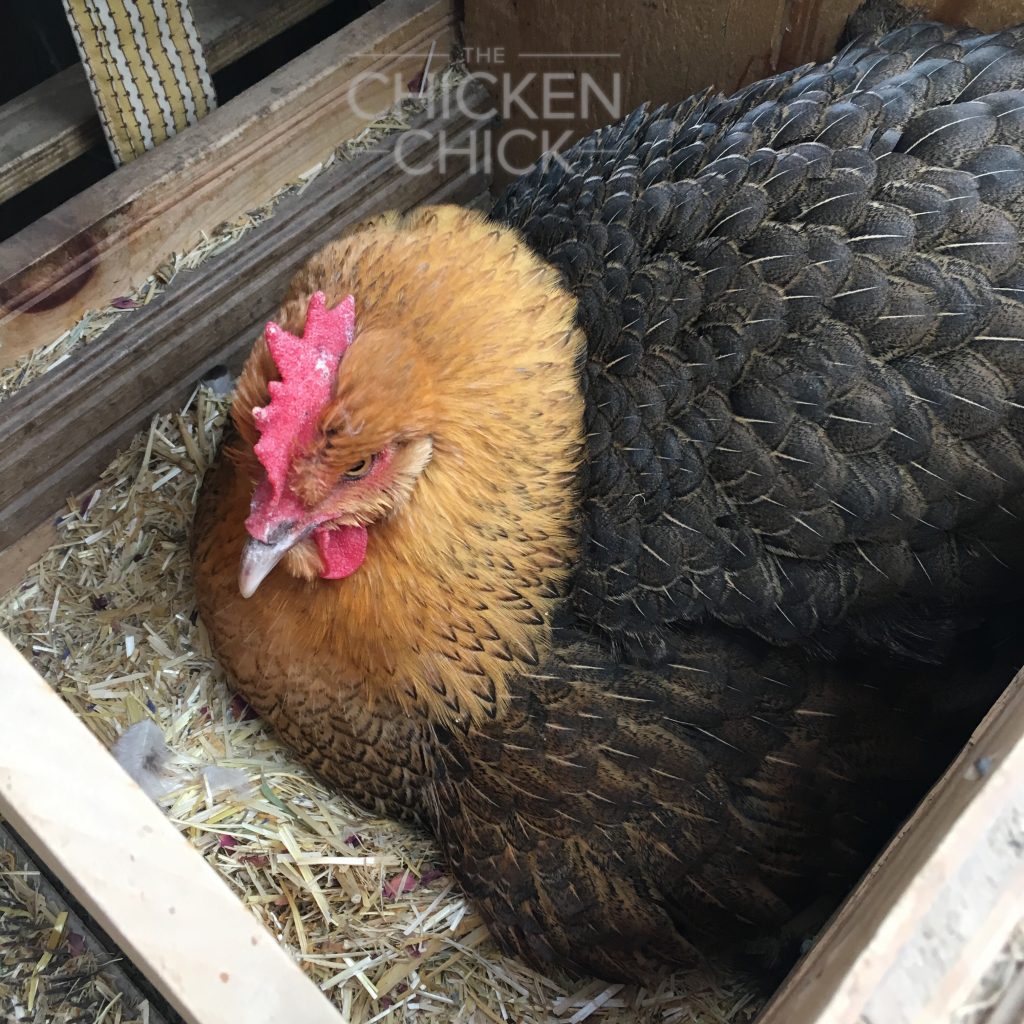
ellen deHeneres display typical broody puffing up with the “get-out-of-here” stink-eye!
WHAT IS A BROODY HEN?
A hen that is committed to hatching chicks is referred to as a broody. Broodiness is influenced by hormones, instinct and lighting conditions. A broody hen will lay eggs over a period of days, stop egg-laying, then sit on the clutch for 21 days (more or less) until they hatch. Some hens will sit on an empty nest, unfertilized eggs, a rock, golf ball…it matters not to her- she will wait as long as it takes for chicks to appear. A broody sits in the nest all day and night, leaving it briefly once or twice daily to eat, drink, relieve herself and dust bathe. She consumes 80% less feed per day than usual, taking a toll on her health. This drastic change normal routine is tolerable in 21 day stints but protracted periods of broodiness negatively impact her health. Learn the repercussions of broodiness for the hen, the flock, and the telltale signs of a broody hen HERE.
OPTIONS FOR MANAGING A BROODY HEN
1. BREAK HER UP
In situations where it is not possible or desirable for a hen to hatch chicks, the behavior should be discouraged by “breaking” her up. The sooner a hen is broken up, the sooner she will get back to egg-laying and life outside the nest box. This article details when and how to break up a broody hen efficiently and kindly.
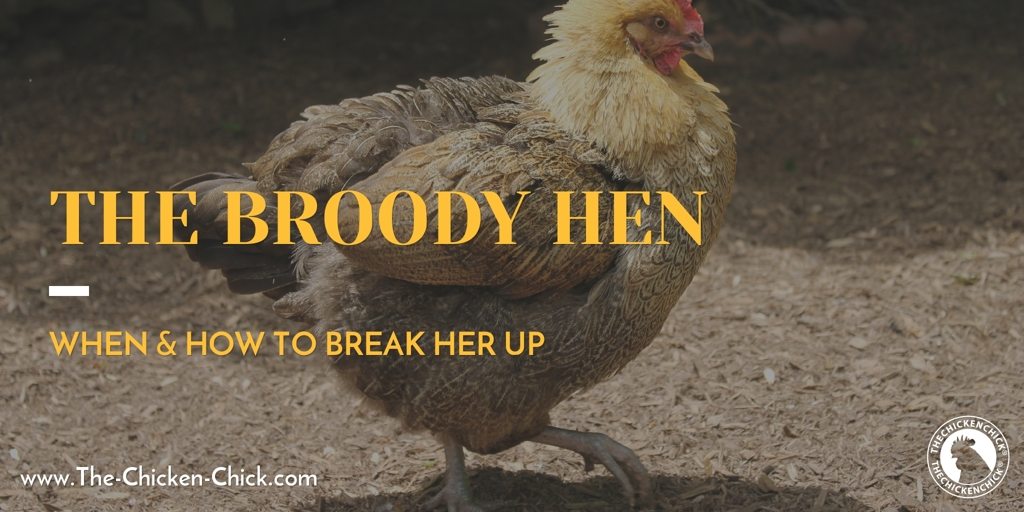
2. FACILITATE HATCHING
Allowing a hen to hatch eggs sounds like a fairly straightforward proposition, but there are quite a few challenges to consider before choosing to move forward with this option. I detail those issues in this article. One of the main considerations is whether the hen will follow-through with the hatch and raise the chicks responsibly. Not all hens are cut-out for the job of mom. Some abandon developing eggs prior to hatch, some kill chicks as they hatch, while others abandon chicks after they hatch. Unfortunately, there is no way to weed-out the bad mothers. The only way to identify a good mother hen is by allowing her to succeed or fail once.
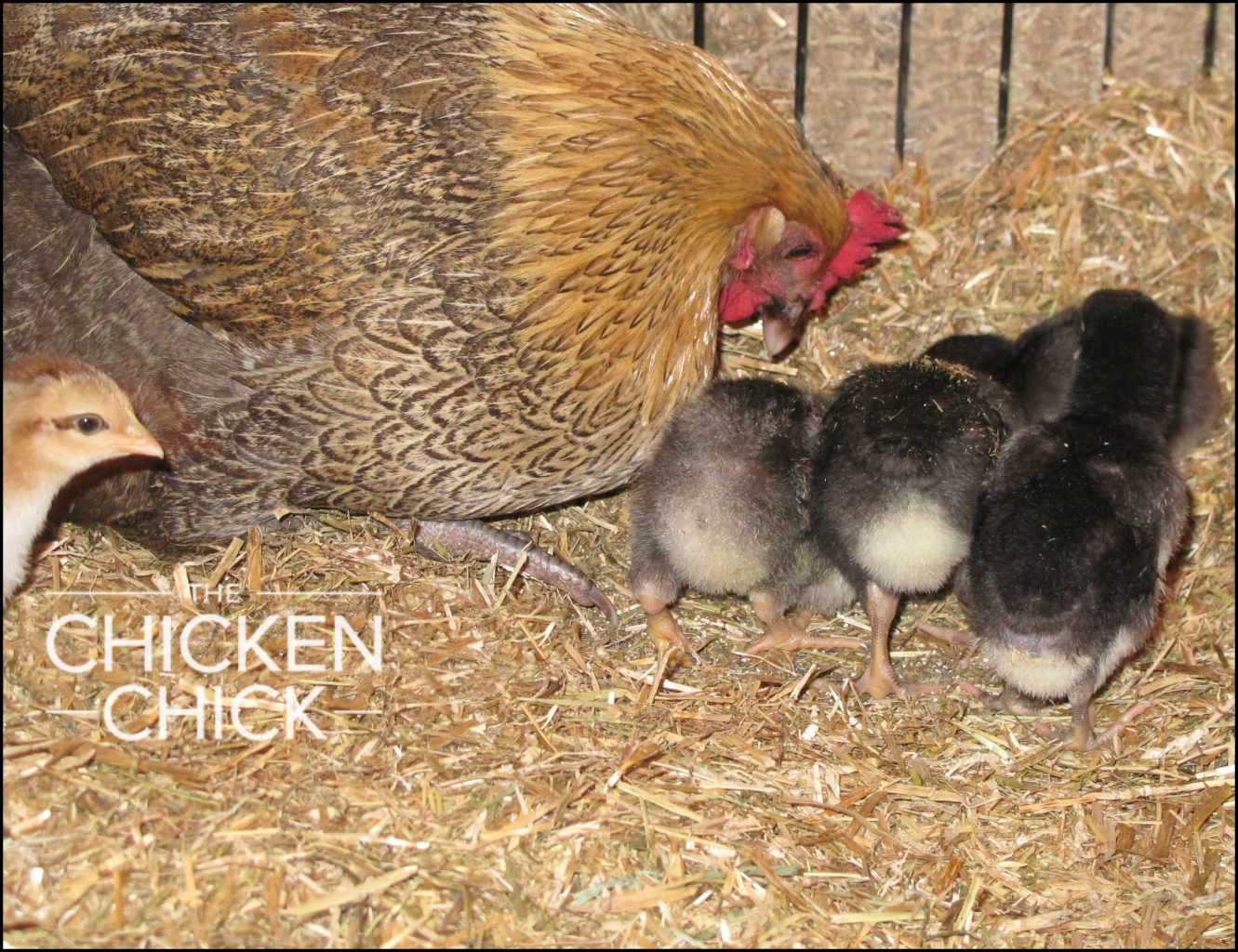
In ellen deHeneres’ case, she has been a good surrogate mother in the past, so I know I can count on her to take care of chicks. I could let her sit and hatch for the entire 3 weeks and raise the chicks in the flock, but there’s more snow on the way this week and it would be better for chicks to be raised in a temperature-stable environment such as a puppy playpen the basement.
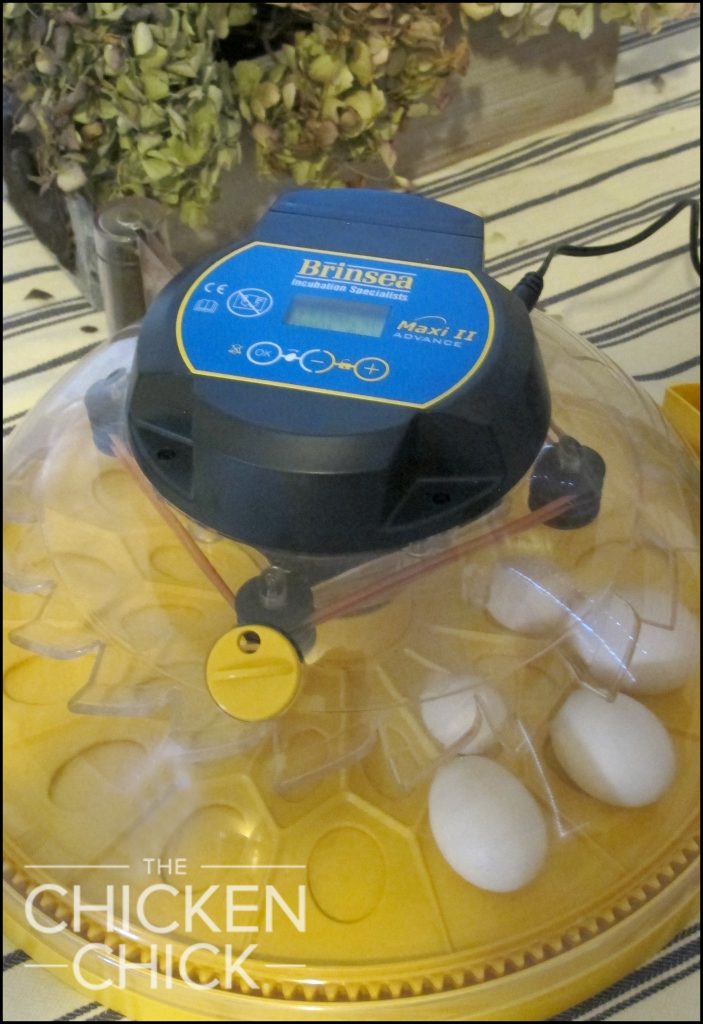
3. INCUBATOR EGG SWAP
Broody hens do not announce their intent to sit, which makes it impossible to rely on them to hatch when it is convenient for us, such as when we have eggs we’d like to set. A hen has no concept of time, she doesn’t know it takes three weeks to hatch chicks from eggs, so it’s entirely possible to take eggs out of an incubator and give them to a broody hen to finish the job.
I was gifted some Silkie hatching eggs by legendary poultry author, Gail Damerow several weeks ago, which have been developing in my office in an incubator. I could give the eggs to Ellen to hatch, which would spare her the full course of broodiness and negative health consequences associated with it, but I’d rather watch the chicks hatch inside the incubator with my peeps on Facebook Live!
4. INSTAMOM-GRAFT CHICKS TO A SURROGATE HEN
The fourth option for managing a broody hen is chicken surrogacy: make her an Instamom! I only recommend this route with a hen who has demonstrated previously that she is a good mother. The worst case scenario of employing this strategy with an untested broody is that she could kill the chicks.
Given that my local Tractor Supply Stores are brimming with spring chicks, I can buy baby chicks to give to Ellen to raise. #chickenmath The process for grafting chicks to a broody hen is simple: wait until she is asleep at night and tuck the chicks underneath her. She will wake up in the morning with her mission fulfilled, blissfully unaware that she didn’t hatch the chicks herself.
Only attempt the Instamom route with chicks that are younger than 5 days old. They will imprint on her up until then, but beyond that age, they may not. I always recommend keeping a close watch on the behavior of the surrogate hen and the chicks when facilitating surrogacy. Either could reject or abandon the other without warning, so be sure to keep a brooder setup handy in case the grafting fails.
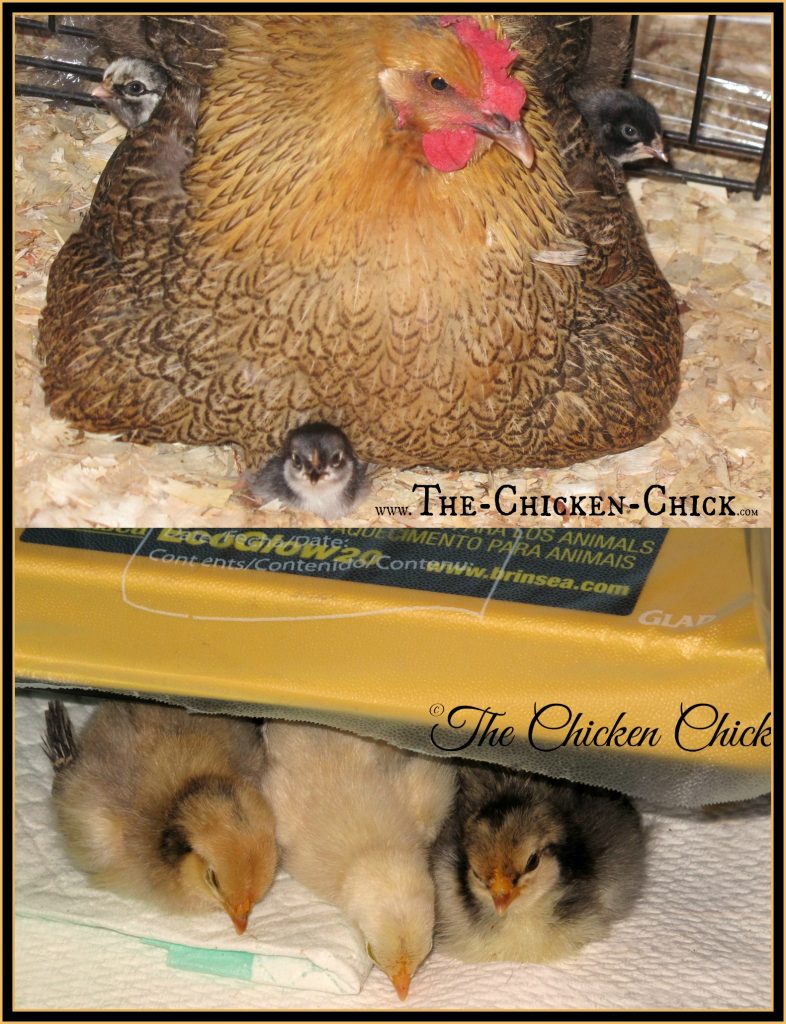
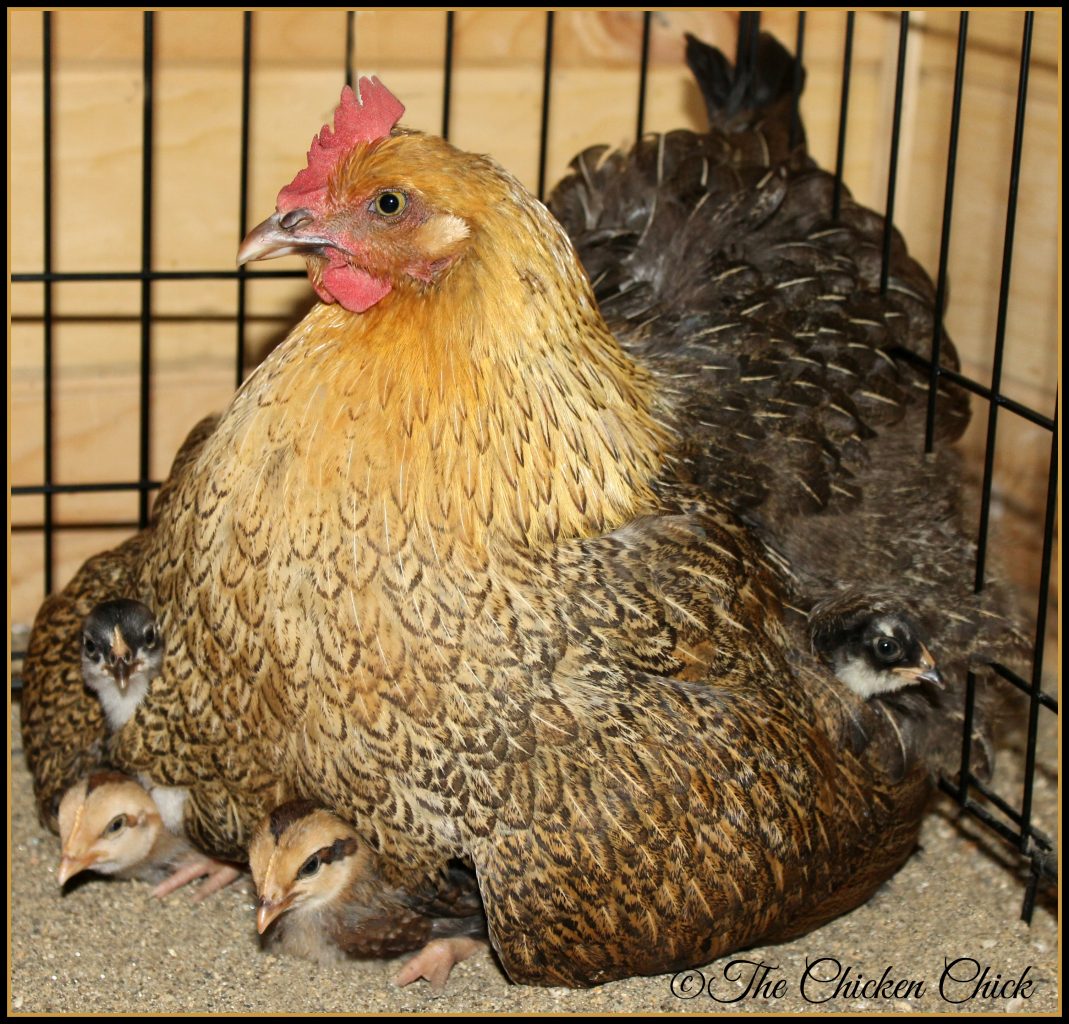
Ellen deHenres has been an Instamom on more than one occasion. The chicks underneath her in this instance were two Dorkings, a Spanish, a Wyandotte, and Plymouth Rock (Samson, Delilah, Margarita, Sylvio and Buelah, respectively).
Kathy Shea Mormino
Affectionately known internationally as The Chicken Chick®, Kathy Shea Mormino shares a fun-loving, informative style to raising backyard chickens. …Read on


shop my SPONSORS

Spring is typically when we think of mother hens hunkering down in nests to hatch baby chicks, but a hen can be influenced by maternal hormones any time of year. Despite several feet of snow having been dumped on parts of Connecticut this week, my ol’ girl, ellen deHeneres, isn’t waiting for spring, she’s broody now! Let’s look at various options for managing a broody hen, including facilitating chicken surrogacy, by grafting chicks to a broody hen!

Rachel is the poster chick for broodiness. She never met a nest she didn’t want to occupy.

ellen deHeneres display typical broody puffing up with the “get-out-of-here” stink-eye!
WHAT IS A BROODY HEN?
A hen that is committed to hatching chicks is referred to as a broody. Broodiness is influenced by hormones, instinct and lighting conditions. A broody hen will lay eggs over a period of days, stop egg-laying, then sit on the clutch for 21 days (more or less) until they hatch. Some hens will sit on an empty nest, unfertilized eggs, a rock, golf ball…it matters not to her- she will wait as long as it takes for chicks to appear. A broody sits in the nest all day and night, leaving it briefly once or twice daily to eat, drink, relieve herself and dust bathe. She consumes 80% less feed per day than usual, taking a toll on her health. This drastic change normal routine is tolerable in 21 day stints but protracted periods of broodiness negatively impact her health. Learn the repercussions of broodiness for the hen, the flock, and the telltale signs of a broody hen HERE.
OPTIONS FOR MANAGING A BROODY HEN
1. BREAK HER UP
In situations where it is not possible or desirable for a hen to hatch chicks, the behavior should be discouraged by “breaking” her up. The sooner a hen is broken up, the sooner she will get back to egg-laying and life outside the nest box. This article details when and how to break up a broody hen efficiently and kindly.

2. FACILITATE HATCHING
Allowing a hen to hatch eggs sounds like a fairly straightforward proposition, but there are quite a few challenges to consider before choosing to move forward with this option. I detail those issues in this article. One of the main considerations is whether the hen will follow-through with the hatch and raise the chicks responsibly. Not all hens are cut-out for the job of mom. Some abandon developing eggs prior to hatch, some kill chicks as they hatch, while others abandon chicks after they hatch. Unfortunately, there is no way to weed-out the bad mothers. The only way to identify a good mother hen is by allowing her to succeed or fail once.

In ellen deHeneres’ case, she has been a good surrogate mother in the past, so I know I can count on her to take care of chicks. I could let her sit and hatch for the entire 3 weeks and raise the chicks in the flock, but there’s more snow on the way this week and it would be better for chicks to be raised in a temperature-stable environment such as a puppy playpen the basement.

3. INCUBATOR EGG SWAP
Broody hens do not announce their intent to sit, which makes it impossible to rely on them to hatch when it is convenient for us, such as when we have eggs we’d like to set. A hen has no concept of time, she doesn’t know it takes three weeks to hatch chicks from eggs, so it’s entirely possible to take eggs out of an incubator and give them to a broody hen to finish the job.
I was gifted some Silkie hatching eggs by legendary poultry author, Gail Damerow several weeks ago, which have been developing in my office in an incubator. I could give the eggs to Ellen to hatch, which would spare her the full course of broodiness and negative health consequences associated with it, but I’d rather watch the chicks hatch inside the incubator with my peeps on Facebook Live!
4. INSTAMOM-GRAFT CHICKS TO A SURROGATE HEN
The fourth option for managing a broody hen is chicken surrogacy: make her an Instamom! I only recommend this route with a hen who has demonstrated previously that she is a good mother. The worst case scenario of employing this strategy with an untested broody is that she could kill the chicks.
Given that my local Tractor Supply Stores are brimming with spring chicks, I can buy baby chicks to give to Ellen to raise. #chickenmath The process for grafting chicks to a broody hen is simple: wait until she is asleep at night and tuck the chicks underneath her. She will wake up in the morning with her mission fulfilled, blissfully unaware that she didn’t hatch the chicks herself.
Only attempt the Instamom route with chicks that are younger than 5 days old. They will imprint on her up until then, but beyond that age, they may not. I always recommend keeping a close watch on the behavior of the surrogate hen and the chicks when facilitating surrogacy. Either could reject or abandon the other without warning, so be sure to keep a brooder setup handy in case the grafting fails.


Ellen deHenres has been an Instamom on more than one occasion. The chicks underneath her in this instance were two Dorkings, a Spanish, a Wyandotte, and Plymouth Rock (Samson, Delilah, Margarita, Sylvio and Buelah, respectively).




























I find silkies make the best moms. Getting chicks after a move. New coop. Winning this would be great!
I loved reading this! I have 3 hens 2 of which are sitting on 13 eggs each and not real sure if I should pull the eggs or not. Thanks for posting
I love this site. It’s my go to place for chicken advice. Thanks Kathy! Please enter me for the Best Nest Box! ?❤️
Great information! I always wondered about giving a broody hen baby chicks and how to go about it! I may have to try this out soon!
Your information on breaking the broody worked for my first round of birds wonderfully. Thank you.
Any information on keeping the freerangers from digging up my flower beds? Or landscaping tips for freelancers? I have holes all over my flower beds after a day of raking them from their last digging fiasco!
I sure do! –> http://bit.ly/1Dofwtl